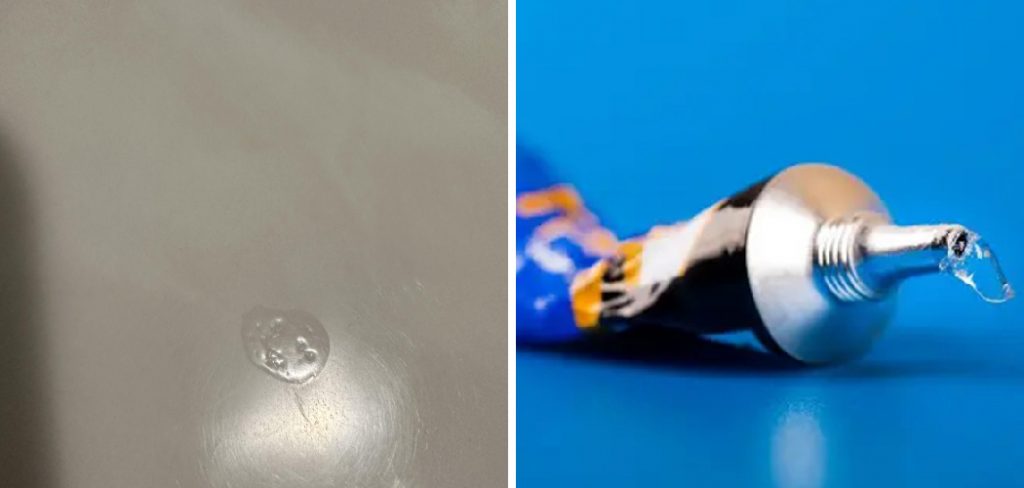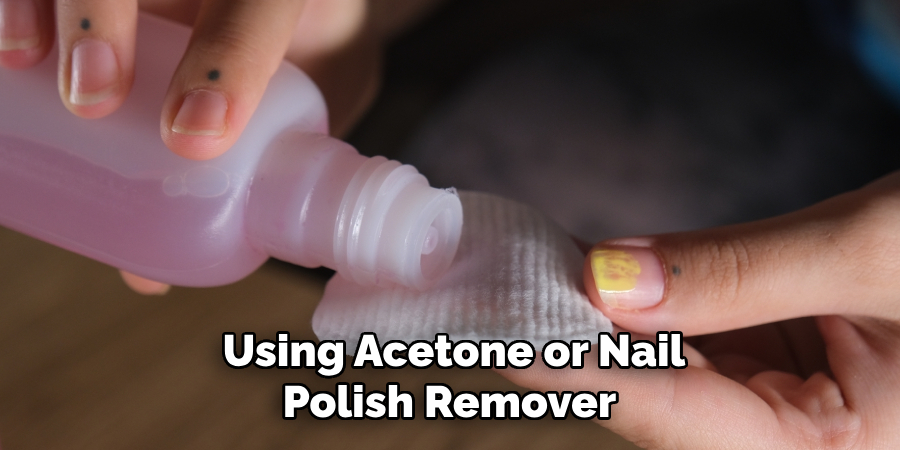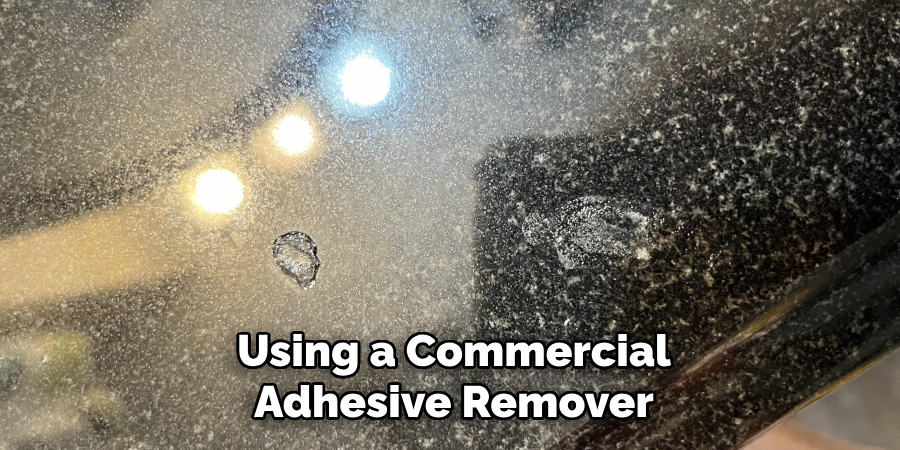Accidentally spilling superglue on your countertop can be frustrating, but it’s a problem that can be resolved with the right approach. Before attempting to remove the glue, it’s important to know the type of countertop material you’re working with to avoid causing damage. With a few simple tools and careful techniques, you can safely and effectively remove superglue and restore your countertop to its original condition. This guide will walk you through the steps of how to remove superglue from countertop with confidence.

Why Proper Removal Techniques Are Essential
Using proper removal techniques is crucial to prevent damage to your countertop and ensure the best results. Improper methods, such as using harsh chemicals or abrasive tools, can scratch, discolor, or even permanently harm the surface. Additionally, certain countertop materials, like granite or laminate, have specific care requirements that must be taken into account. By following the correct steps, you can avoid unnecessary damage, prolong the lifespan of your countertop, and maintain its aesthetic appeal. Careful removal also reduces the risk of leaving residue behind, ensuring a clean and polished result.
Tools and Materials Needed
Before you start removing superglue, gather the necessary tools and materials to ensure the process goes smoothly. Here’s what you’ll need:
- Acetone or Nail Polish Remover: To soften the superglue for easier removal.
- Cotton Balls or Soft Cloth: For applying acetone without scratching the surface.
- Plastic Scraper or Credit Card: To gently lift the softened glue without damaging the countertop.
- Warm Water and Dish Soap: To clean the area once the glue is removed.
- Paper Towels or Microfiber Cloth: For drying the countertop after cleaning.
- Masking Tape (Optional): To protect surrounding areas from accidental damage.
Having these items ready will help streamline the process and minimize the risk of further spills or damage during the removal. Always test acetone on a small, inconspicuous area first to ensure it does not harm the countertop material.
10 Methods How to Remove Superglue from Countertop
1. Using Acetone or Nail Polish Remover
Acetone is one of the most effective solutions for dissolving superglue. Apply a small amount of pure acetone or nail polish remover containing acetone onto a cotton ball or soft cloth. Gently rub the affected area in circular motions until the glue begins to break down. For tougher spots, allow the acetone to sit on the glue for a few minutes before wiping it away. Be cautious when using acetone on delicate countertops like marble, as it can cause discoloration.

2. Scraping with a Plastic Razor Blade
If the glue has hardened, carefully scraping it off can help. Use a plastic razor blade or an old credit card to gently lift the glue from the countertop. Hold the scraper at a low angle and push it under the glue, applying minimal pressure to avoid scratching the surface. This method is ideal for hard, non-porous surfaces like quartz and granite.
3. Applying Warm Soapy Water
For fresh or minor superglue spills, warm soapy water can be effective. Soak a cloth in warm water mixed with mild dish soap and place it over the glue for 10-15 minutes. The heat and moisture will soften the glue, making it easier to wipe away. Use a gentle scrubbing motion with a non-abrasive sponge to remove any remaining residue.
4. Using Rubbing Alcohol
Rubbing alcohol (isopropyl alcohol) can help break down superglue without being as harsh as acetone. Soak a cotton ball in rubbing alcohol and apply it to the affected area. Let it sit for a few minutes before gently scrubbing with a soft cloth. This method is particularly useful for laminate and quartz countertops, as it won’t cause discoloration.
5. Making a Baking Soda Paste
Baking soda is a natural abrasive that can help remove superglue without damaging countertops. Mix equal parts of baking soda and water to create a thick paste. Apply the paste to the glue and let it sit for a few minutes. Use a damp cloth to rub the paste in circular motions until the glue loosens and lifts off. Rinse with warm water to remove any residue.

6. Using White Vinegar
White vinegar is a mild acid that can help dissolve superglue. Soak a cloth or paper towel in white vinegar and place it over the glue for 10-15 minutes. The acidity will break down the glue, making it easier to wipe away. This method is safe for most countertops, but it should be used with caution on natural stone surfaces, as acids can etch the material.
7. Applying Cooking Oil or Coconut Oil
Oils such as vegetable oil, coconut oil, or olive oil can help loosen superglue by breaking its bond with the surface. Apply a generous amount of oil to the glue and let it sit for 15-20 minutes. Use a soft cloth to gently rub the area until the glue starts to lift. Wipe away any excess oil with warm soapy water to prevent residue buildup.
8. Using a Commercial Adhesive Remover
There are specialized adhesive removers available that are designed to break down strong glues like superglue. Choose a remover that is safe for your countertop material and follow the manufacturer’s instructions. Apply the solution to the glue, let it sit for the recommended time, and wipe it away with a soft cloth. Rinse thoroughly to remove any leftover chemicals.

9. Freezing the Glue with Ice
If the glue is fresh, freezing it can make it brittle and easier to remove. Place an ice pack or a bag of ice cubes over the glue for 15-20 minutes. Once the glue hardens, gently scrape it off using a plastic razor blade or credit card. This method works well on non-porous surfaces like quartz and laminate.
10. Sanding with a Fine-Grit Sandpaper
For stubborn superglue stains on durable surfaces, using fine-grit sandpaper (600 grit or higher) can help remove the glue without causing significant damage. Lightly sand the glue in circular motions, being careful not to scratch the surrounding countertop. Finish by wiping the area with a damp cloth to remove any dust.
Maintenance and Upkeep
To keep your countertops looking pristine and free of damage, regular maintenance is essential. Clean spills immediately using a mild dish soap and warm water to prevent staining or buildup. Avoid placing hot items directly on the countertop surface; instead, use trivets or heat-resistant pads to protect against heat damage. For daily cleaning, use a non-abrasive sponge or cloth to avoid scratches and wear. It’s also a good idea to periodically inspect your countertops for any signs of wear, such as chips or discoloration, and address issues promptly to prevent further damage.
When working with adhesives or harsh chemicals, always cover the surrounding area with protective materials like masking tape, plastic sheeting, or old towels. This added precaution will protect the surface from accidental spills or scratches. Regular maintenance not only preserves the appearance of your countertops but also extends their lifespan, ensuring they remain both functional and beautiful for years to come.
Troubleshooting Common Issues
Glue Residue Remains After Removal
If a faint residue remains after removing the superglue, repeat the chosen removal method. For stubborn residues, try combining methods, such as applying rubbing alcohol after using warm soapy water. Alternatively, use a microfiber cloth with a small amount of baking soda paste for added abrasiveness. Always rinse and dry the area thoroughly once the residue is gone.
Discoloration on Countertop
If the countertop surface appears discolored after using a removal method, it may be due to the solution used. Acetone and other harsh chemicals can affect some surfaces, such as marble or granite. To restore the surface, use a countertop repair product designed for your material, or consult a professional for refinishing options. To prevent this issue, always test removal solutions on an inconspicuous area first.
Scratches or Damage to the Surface
Scratches can result from using abrasive tools like sandpaper or overly aggressive scraping. For minor scratches, a polishing compound suitable for your countertop material can help restore the finish. Make sure to clean the area beforehand to remove debris. For deeper scratches or chips, professional repair might be necessary.

Glue Hardened Too Quickly
If the glue hardened before you could address it, use a combination of freezing the glue with ice and scraping with a plastic razor blade. The freezing method makes the glue brittle, allowing for easier removal. Patience is key when dealing with hardened glue, as rushing can lead to surface damage.
Lingering Odor from Chemicals
The use of solvents like acetone or commercial adhesive removers may leave a strong odor. To neutralize odors, clean the area with warm soapy water and ventilate the space by opening windows or using fans. Placing bowls of baking soda or activated charcoal nearby can also help absorb lingering smells.
Conclusion
Removing superglue from countertops can be a challenging task, but with the right methods and precautions, it is entirely manageable. Whether you opt for natural solutions like vinegar and oils or stronger approaches such as acetone or commercial adhesive removers, always consider the type of countertop material before proceeding. Taking preventive steps, such as covering surfaces during projects and cleaning up spills immediately, can save significant time and effort in the long run. Now that you know how to remove superglue from countertop, try it yourself today and feel good about completing such a big DIY job!
Professional Focus
Angela Ervin, a former interior designer turned blogger, specializes in kitchen design and renovations. Through her website, she blends her passion for cooking with design expertise, sharing practical and creative ideas. Known for balancing functionality and beauty, Angela’s insightful content has made her a trusted voice in home design and lifestyle.
About the Author
Angela Ervin, an experienced interior designer and blogger, combines her passion for kitchen renovations with storytelling. Living in Petersburg with her family, she enjoys cooking and testing her projects firsthand. Known for her humor and relatable style, Angela shares creative, functional design insights through her content, making her a trusted voice in home design.
Education History
University: Virginia Commonwealth University
Degree: Bachelor of Fine Arts (BFA) in Interior Design
- Angela’s education at VCU focused on mastering core interior design principles, including spatial planning, color theory, materials selection, and sustainable design practices.
- She gained hands-on experience through studio projects and collaborative design exercises, which honed her ability to create functional and aesthetically pleasing environments.
- Her coursework also emphasized problem-solving and practical applications of design, preparing her for real-world projects like her self-directed kitchen renovations.
- The program’s strong foundation in both technical skills and creative expression shaped Angela’s ability to seamlessly integrate form and function in her work.
